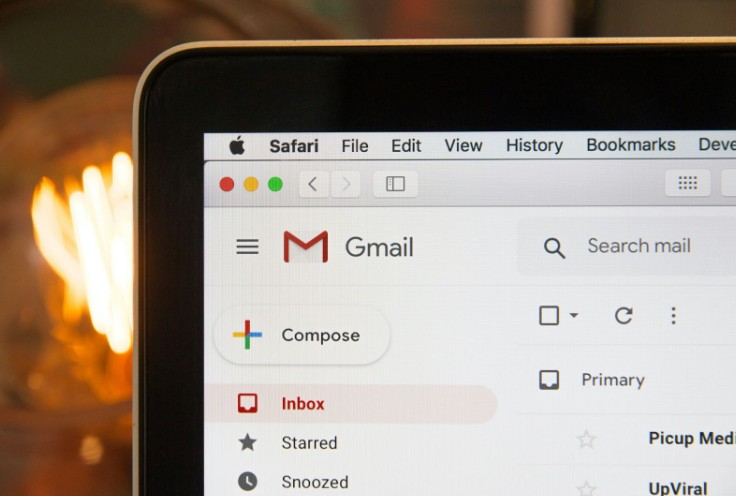In this article we will have a look at A Beginner’s Guide to Diagnosing Email Delivery Problems Without Overthinking It.
There’s nothing more frustrating than problems with your email inbox. Whether you use it for personal use, work, or both, having issues where the emails are not delivering can really throw a lot of chaos into your day-to-day life.
With that being said, there are some helpful tips that will ensure you diagnose email delivery problems without overthinking it too much.
In this guide, we’ll look at everything you need to know about diagnosing email delivery problems, what to do first, and how to prevent the issue from happening again.
What to check before touching any advanced settings
Before you go touching any of the advanced settings that are within your inbox, there are several checkpoints to go through first.
- Internet connection
It’s worthwhile checking that your device is actually connected to the internet. Sometimes a drop out from your connection can happen, which may likely be contributing to emails not sending or being received properly.
- Recipient’s email address
Double-checking the recipient’s email address is a good way to check it’s not what you’re inputting that’s the problem. Typos can occur even when you’re precise in your typing talents. An incorrect address is often the common reason for a failed delivery.
- Check if your mailbox is full
Check your mailbox to see if it’s full. If you’ve run out of storage space, then new emails are not going to be delivered, and you may not always be aware when storage runs out. Not all email inboxes will send reminders or notifications.
- Check spam/junk folders
Sometimes, legitimate emails often get mistakenly filtered into spam/junk folders. So if you’re expecting an email, it’s always a good idea to check these folders. The content that the sender is providing might not always be appropriate for the filters.
- Password and settings
Confirming your email account password is correct within your basic settings is helpful to ensure that this isn’t causing the conflict with delivery.
- Attachments
Verifying that any attachments aren’t too large for the email service limits and are in a widely supported format is good to check with any emails you’re expecting to receive. Some attachments will be sent instead via Google Drive or Dropbox as a separate email.
How different email clients handle queued messages
When an email is queued, that means it’s temporarily waiting to be sent from your Outbox. This queuing is a built-in mechanism that enables the email client to retry sending whenever an immediate delivery isn’t successful.

It can often be queued due to temporary issues like a busy recipient server or a lost internet connection.
You’ll find that most email clients, from Outlook to Gmail, will rely on the same core protocols for sending and receiving. These are SMTP for sending and POP3/IMAP for receiving. There are a few differences, though, when it comes to the user interface and proprietary features.
- Automatic retries – All clients automatically attempt to resend queued messages once the temporary condition is resolved.
- Visibility – Manually check a specific outbox or drafts to see if messages are stuck there.
- Cloud vs app – Web-based clients handle queuing on the provider’s server, whereas mobile/desktop apps manage the queue locally on your device until a stable connection is made.
- Error reporting – Different clients will display error messages with varying levels of detail that provide crucial clues as to what’s going wrong.
It’s good to know what can cause these issues and what you need to adjust or change in order to make it work more efficiently.
The small adjustments that solve big headaches
When it comes to managing your email delivery problems in the future, there are some small adjustments that you can make that will solve some big headaches further down the line.
Implement double opt-in
For mailing lists, it’s always good to select the double opt-in process, and that way, all subscribers are valid and genuinely want your emails as a result. This is helpful when you run a business and want to ensure your emails are landing in your customers’ inboxes without fault. It improves list quality and sender reputation.
Warm up a new domain/IP
If you’re using a new sending domain, you can gradually increase your email volume over several weeks. That way, you build a positive sender reputation with email providers, and therefore, there’s a greater chance of delivery success each time.
Use the recommended SMTP port
If there are repetitive connectivity issues, try switching your outgoing SMTP port from the default Port 25 to Port 587.
Regularly clean your list
Removing any inactive subscribers and email addresses is a useful way to maintain a healthy email list. For personal inboxes, adding all your regular email recipients will help to avoid hard bounces.
Set up basic authentication
Basic authentication can be helpful for helping receiving servers verify your email’s authenticity and prevent it from being marked as spam. Basic SPF and DKIM that are set up will help with all of this.
Test before sending campaigns
When you’re a business sending out campaign emails, it’s good to always test them before trying to do it straight away. Send a test email to different accounts, whether it’s a Gmail, Hotmail, or Outlook one. This will help you to see how your content renders and if it lands in the primary inbox or if it ends up in spam instead.
Diagnosing email delivery problems is something you want to be proactive in doing, especially when it’s a big part of your day-to-day life, like your business, for example.
While email delivery problems can be an issue, there are simple ways to fix the problem before it gets any worse. Make sure you’re following these tips and guidance to give yourself the best chance of diagnosing email delivery problems.
If any particular issues don’t seem to be rectifying themselves, then it’s a good idea to get in touch with your email client to see if they can troubleshoot the problem for you.
If this has been helpful, then please also subscribe to our Youtube channel – Our Technology Planet for more exciting stuff and videos.
Haider Khalid
Latest posts by Haider Khalid (see all)
- A Beginner’s Guide to Diagnosing Email Delivery Problems Without Overthinking It - November 18, 2025
- What to Consider when Buying a Small Car? - November 18, 2025
- 3 Steps To Fixing Up Your Car Before Sale – Without Scaring Off Buyers - November 18, 2025
